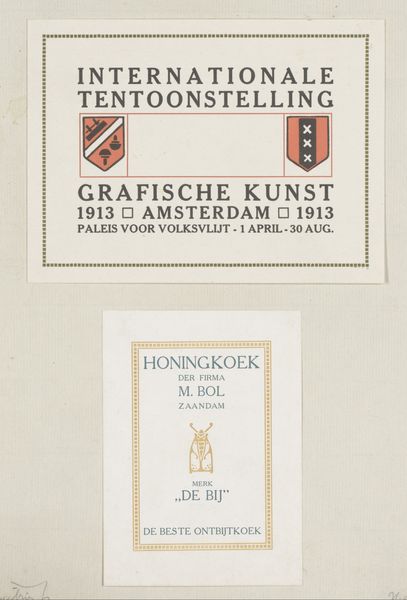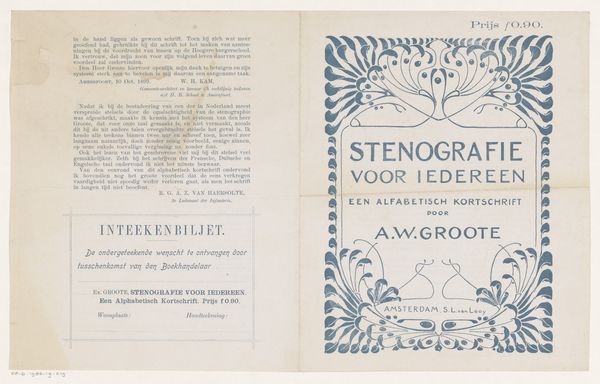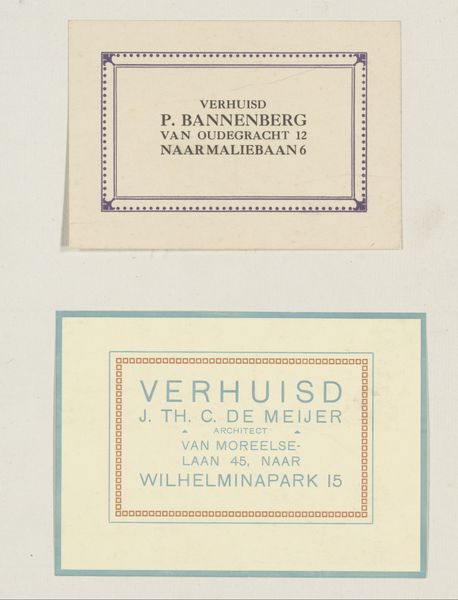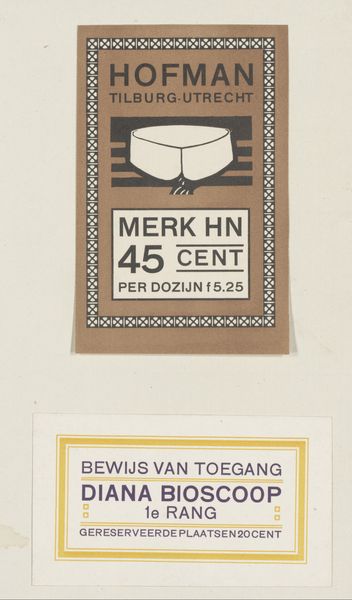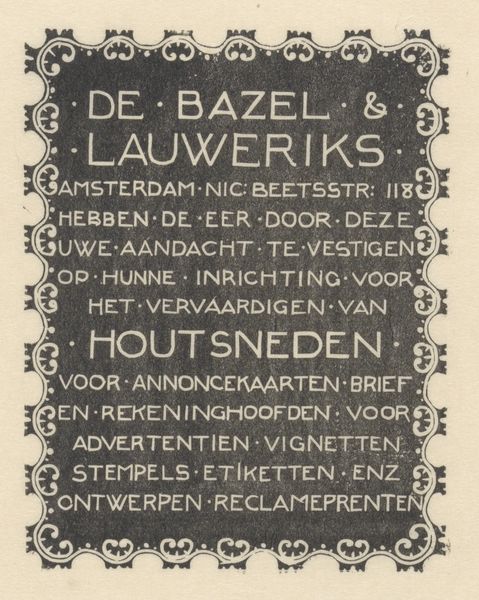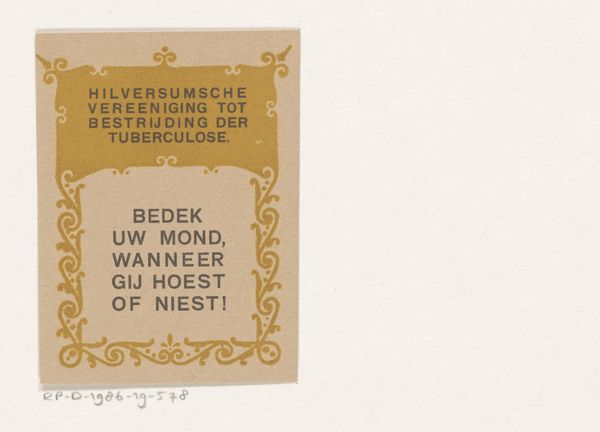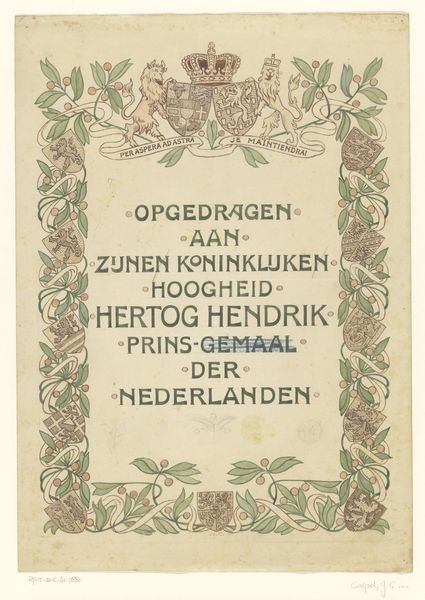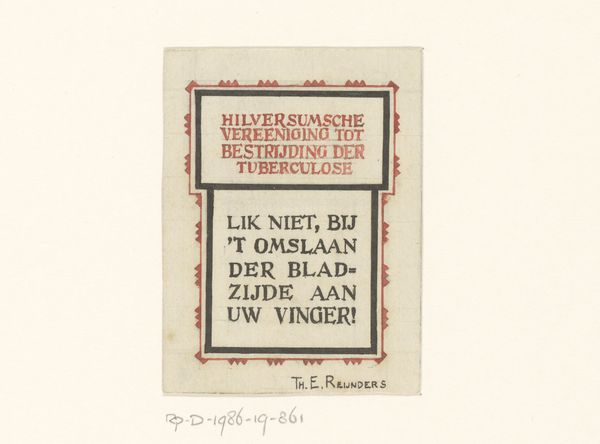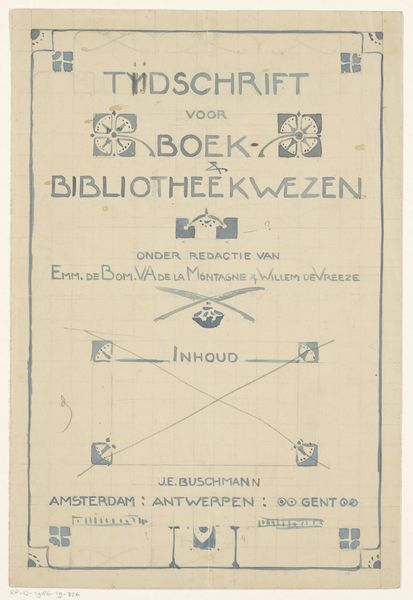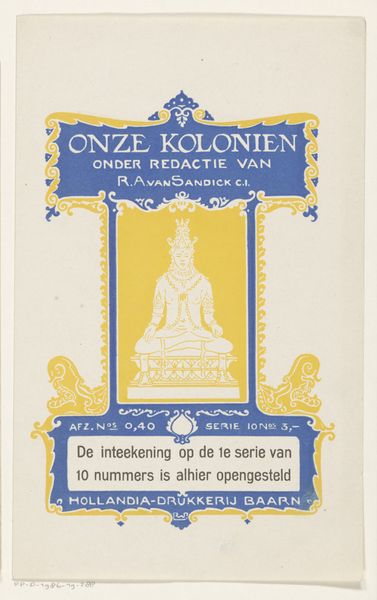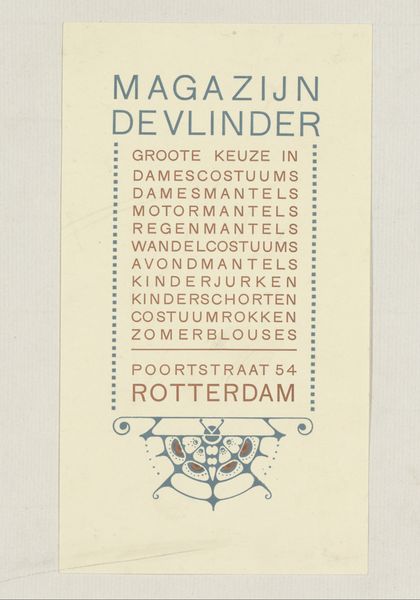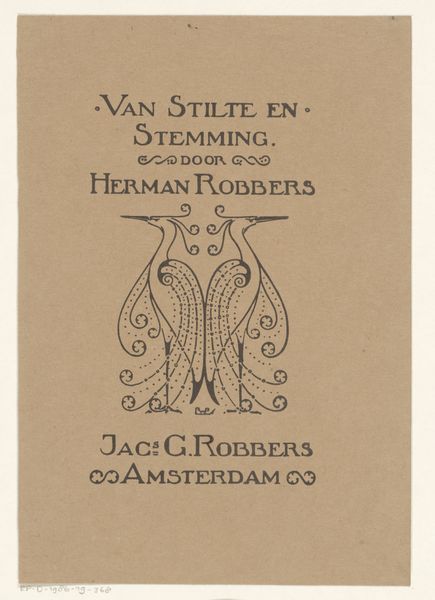
Advertenties voor Cerebos tafelzout en hoeden van Chapeau D'Or 1884 - 1952
0:00
0:00
graphic-art, poster
#
graphic-art
#
art-nouveau
#
poster
Dimensions: height 127 mm, width 89 mm, height 76 mm, width 127 mm
Copyright: Rijks Museum: Open Domain
Editor: So, this is "Advertenties voor Cerebos tafelzout en hoeden van Chapeau D'Or," by Reinier Willem Petrus de Vries, and the date range is pretty wide, 1884 to 1952. It’s a poster, so printed, and the colors are quite muted. What stands out to me is how everyday it feels, like ephemera, but it's also trying to be artistic. What do you see in this piece? Curator: The combination of table salt and hats draws attention to the daily routines of women from that period. We could view it from a materialist perspective, observing that salt, a vital commodity acquired via global trade networks and transformed through industrial processes, sits juxtaposed with hats produced using fabrics, dyes, and considerable female labour. The art nouveau style in their making reveals their creators labour and context of their period, bridging high art with ordinary articles via aesthetics. Are you wondering, like me, about the socioeconomic levels and consumer behaviours promoted in the day? Editor: That's interesting. I was more focused on the images themselves as art, but you're drawing attention to the means of making. What impact might such products and images have on cultural values and assumptions about work? Curator: Absolutely, let’s examine consumption and commodity fetishism to highlight these associations further, since both salt for housewives or beautifully manufactured hats are produced and promoted as vital goods during those years by capitalist systems through material qualities, commercial labour power & propaganda mechanisms – we can start evaluating ways that these elements work culturally together. What else intrigues when considering consumerism within capitalism? Editor: It definitely highlights the economic relationships between producers, consumers, and the marketplace itself, framing a certain female domesticity of the time. I never considered these details but by shifting our perception it opens our horizons towards new interpretations regarding production! Thanks! Curator: Precisely. Seeing how manufacturing, consumer needs as societal pressures mold perspectives gives rise new readings beyond form, aesthetics enriching experiences greatly.
Comments
No comments
Be the first to comment and join the conversation on the ultimate creative platform.
